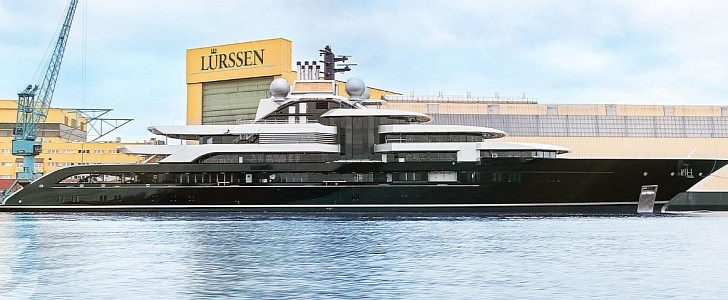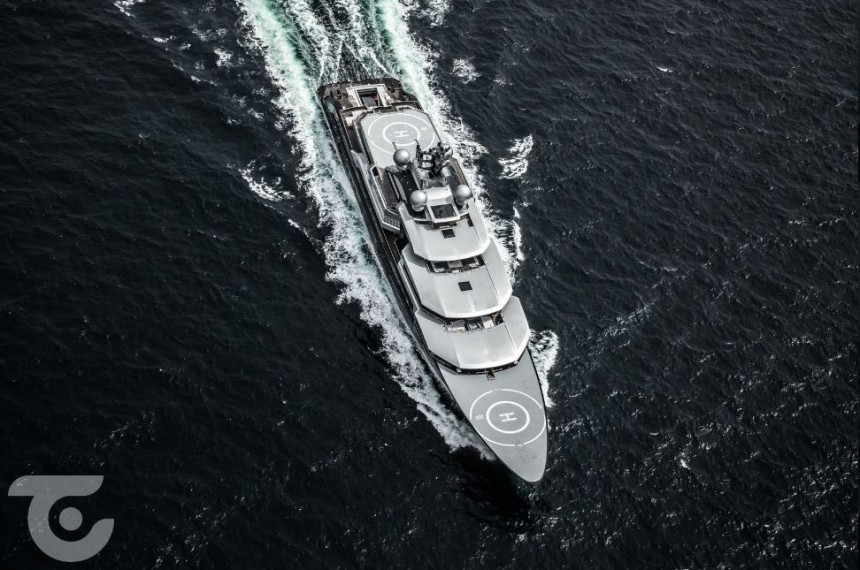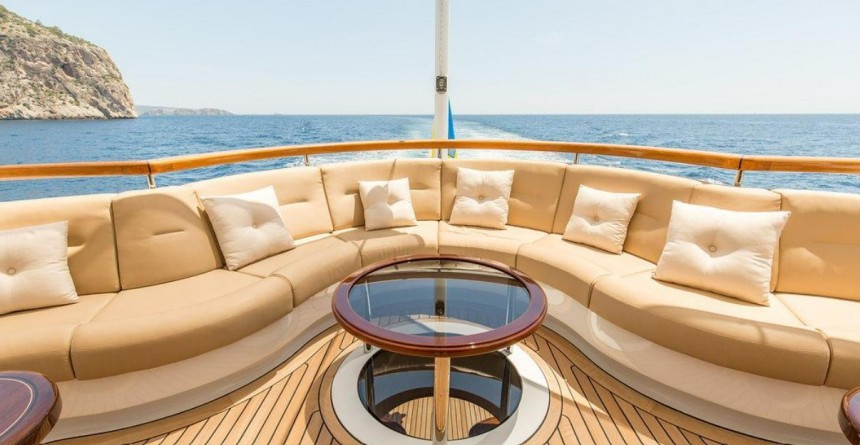In February 2022, Russian troops invaded Ukraine, and the war has been raging ever since. Within days of the invasion, countries who did not and still would not get into direct conflict with Russia decided that one way of fighting back was through economic sanctions against Russian oligarchs.
In March 2022, sanctions were already going into effect, with authorities from the UE, UK, the U.S. and Australia (to name just a few) announcing the seizure of luxury assets, including superyachts, premium real estate, vehicle fleets and private jets. In theory, seizing or freezing these assets would discourage the oligarch owners from financing Putin’s war, if only because it would mean a drastic cut in cash flow. In practice, things are proving far less clear-cut.
As of the time of press, assets worth in the hundreds of billions of dollars have been seized or frozen around the world. Some of the world’s most expensive and famous superyachts, like the $600 million Dilbar or the $700+ million Scheherazade, are blocked from leaving their docks, while local authorities look into ownership and try to determine the right course of action.
The situation offers a rare insight into the formerly closed-off world of the superyacht-owning one-percenters. It is also an unprecedented one from a legal standpoint, and perhaps ironically, puts the pressure on the local taxpayer. If one individual is sanctioned in a certain country and his or her asset is detained in that country, he or she can’t make payments there. But a superyacht is not like, say, a car that you drive into the garage, cover under a tarp and then forget about it until you can afford to pay for gas to take it out again. A superyacht costs a lot of money just to own, with trade publications noting that upkeep is about 10% of a ship’s value even if never leaves dock.
Put differently, if you have a $50 million superyacht in custody, seized for supposed ties with a Russian oligarch, you’re on the hook for $5 million a year to pay for its storage, maintenance, crew, and assorted fees. And that money will come from the taxpayers’ pocket – a move that sounds less like a punishment for oligarchs, and more like punishment for the same taxpayers.
It seems that governments are waking up to the realization that blanket seizures were perhaps not the best idea. That’s not to say that they shouldn’t have been implemented, but rather a bit more consideration would’ve been nice.
Earlier this week, Reuters reported that Spain and France, somewhat unofficial record-holders for the highest numbers of seizures of luxury assets, are considering having the owners pay for maintenance of the blocked superyachts. Several sources indicate that there’s a good chance the owners are already paying these costs, and have been all along, because there’s an older European law that makes this distinction between “freezing” and “seizing” an asset. If it’s frozen, the owner still pays for it, but can’t use it.
The report cites the $7.8 million Lady Anastasia, believed to belong to Rosoboronexport CEO Alexander Mikheev, and the much more expensive Crescent, a $600 million Lurssen megayacht owned by Russia’s second most powerful man, Igor Sechin. Both these ships are frozen in Spain, and both have their maintenance expenses up to date. The same goes for five of the vessels in France.
At a casual glance, it makes sense to have the owners pay for the maintenance of their overpriced toys. After all, isn’t the regular taxpayer under enough stress already? It might even seem like enough punishment to own a vessel, pay for it but be denied enjoyment of it, so it would be reasonable to assume that sanctions are having the intended effect.
Except that they’re not. “Sanctions do not seem to have the crippling effect that was intended,” Jaffa & Co. lawyer James Jaffa, says. That’s because Russian oligarchs prefer paying the monthly bills to having them rack up and risk full seizure, which would mean auctioning off the vessel by authorities. These monthly expenses are pocket change for them, either way, even if they’re temporarily banned from using the vessels.
This is clearly a far cry from the bombastic pronouncements of early-day sanctions (“we’re coming for their ill-begotten gains,” remember?). If you consider the fact that Ukraine has gotten exactly zero cents from these sanctions, as was the plan, it’s a rather underwhelming reality. If you think of sanctions as a game of chess, which is what they are, you could say that freezing superyachts was a good first move. Too bad it wasn’t thought out.
As of the time of press, assets worth in the hundreds of billions of dollars have been seized or frozen around the world. Some of the world’s most expensive and famous superyachts, like the $600 million Dilbar or the $700+ million Scheherazade, are blocked from leaving their docks, while local authorities look into ownership and try to determine the right course of action.
The situation offers a rare insight into the formerly closed-off world of the superyacht-owning one-percenters. It is also an unprecedented one from a legal standpoint, and perhaps ironically, puts the pressure on the local taxpayer. If one individual is sanctioned in a certain country and his or her asset is detained in that country, he or she can’t make payments there. But a superyacht is not like, say, a car that you drive into the garage, cover under a tarp and then forget about it until you can afford to pay for gas to take it out again. A superyacht costs a lot of money just to own, with trade publications noting that upkeep is about 10% of a ship’s value even if never leaves dock.
It seems that governments are waking up to the realization that blanket seizures were perhaps not the best idea. That’s not to say that they shouldn’t have been implemented, but rather a bit more consideration would’ve been nice.
Earlier this week, Reuters reported that Spain and France, somewhat unofficial record-holders for the highest numbers of seizures of luxury assets, are considering having the owners pay for maintenance of the blocked superyachts. Several sources indicate that there’s a good chance the owners are already paying these costs, and have been all along, because there’s an older European law that makes this distinction between “freezing” and “seizing” an asset. If it’s frozen, the owner still pays for it, but can’t use it.
The report cites the $7.8 million Lady Anastasia, believed to belong to Rosoboronexport CEO Alexander Mikheev, and the much more expensive Crescent, a $600 million Lurssen megayacht owned by Russia’s second most powerful man, Igor Sechin. Both these ships are frozen in Spain, and both have their maintenance expenses up to date. The same goes for five of the vessels in France.
At a casual glance, it makes sense to have the owners pay for the maintenance of their overpriced toys. After all, isn’t the regular taxpayer under enough stress already? It might even seem like enough punishment to own a vessel, pay for it but be denied enjoyment of it, so it would be reasonable to assume that sanctions are having the intended effect.
This is clearly a far cry from the bombastic pronouncements of early-day sanctions (“we’re coming for their ill-begotten gains,” remember?). If you consider the fact that Ukraine has gotten exactly zero cents from these sanctions, as was the plan, it’s a rather underwhelming reality. If you think of sanctions as a game of chess, which is what they are, you could say that freezing superyachts was a good first move. Too bad it wasn’t thought out.

















